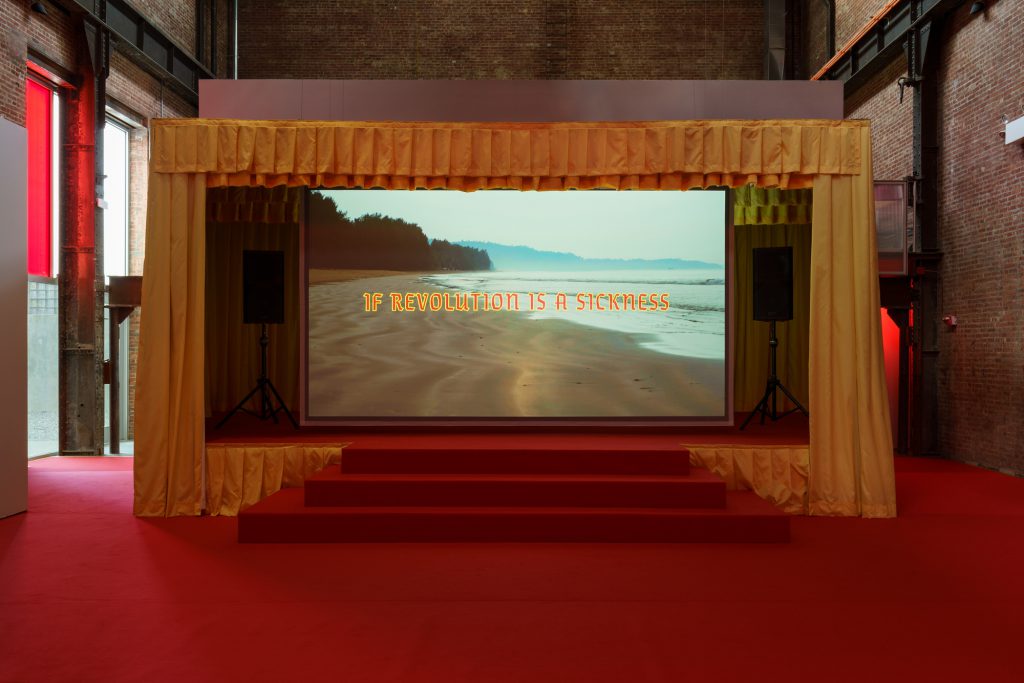
If Revolution Is A Sickness sits in the Sculpture Center in Long Island City. The piece is primarily time-based accompanied by a few still pieces. Upon entry, the audio from the exhibition overtakes the hallway leading up to the large room where the moving image is being projected.
My first interaction with this piece was through sound. As I entered I heard the narration from a young girl. The first thing that I saw visually was the large yellow curtains that enclosed the stage. As I made my way deeper into the room, I noticed that the only thing in the room was the large stage, the screen, two speakers on a stand, and the red steps that lead to the stage. The narration from the video echoed throughout the large industrial-looking room.
The video project is on a loop, allowing visitors to experience it differently based on when they started watching. I caught it in the middle and wasn’t very sure what was occurring. However, as I continued to watch I began noticing some patterns and started to form my own understanding of the piece.
Something about the piece and the room that it’s placed in just pulls you right in. A major symbol in Nguyen’s was the colors used throughout the piece and the exhibition itself. There was yellow and red everywhere. The room was adorned in those colors, and the characters in the film wore those colors as well. Also, white was present but not as pronounced as yellow and red. At first, I dismissed the color white and didn’t think that it was significant. However, I remembered that this piece is exploring the Vietnamese diaspora in Poland. These colors are significant in both the Polish and the Vietnamese flags. The Vietnamese flag is red, with a yellow star in the middle whereas the polish flag has two horizontal stripes, the top one is white and the lower one is red. Red is the color that both of these flags have in common.
Nguyen uses color to help the audience make distinctions between the characters. The main character who is Vietnamese is seen mostly yellow with red accents. Whereas her dance counterparts I assume are Polish are mostly in red, some have white on and yellow is subtle.
As I left the exhibition, my mind kept wondering what the deeper significance of the colors was. These flags represent an idea, they can be the source of pride and value for many, but they can also be a source of grief and torture for some. It’s interesting how the red in both of these flags represents a struggle for freedom and the other color represents the people or a hope for the people in the nations.
Nguyen used this piece to explore identity and the meaning of identity when it comes to one’s heritage and nationality. The piece was very moving because Nguyen managed to tell the story of a group’s collective experience through this one character. Lastly, I personally feel that the title speaks to identity and assimilation. The main character is a Vietnamese girl in Poland, she carries both of these identities but there’s always one that’s more dominant than the other. It makes me wonder if the piece also seeks out to expose the dangers of assimilation and the loss of one’s identity.
With the colors of the dancer’s clothing, Nguyen puts their identities on full display. The audience is able to see the differences and similarities between each dancer. Although they are uniform there’s still some sort of individuality that leaks out.
Written by: Anne Bien-Aime